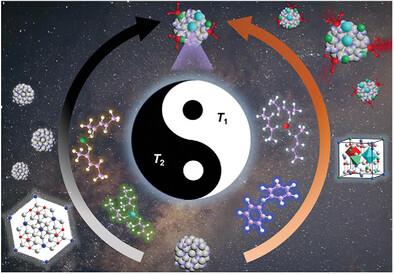Multielement Doping Engineered Iron Oxide Nanoparticles: Enabling the Shift from Negative to Positive MRI Contrast for Enhanced Diagnostic Precision
IF 13
2区 材料科学
Q1 CHEMISTRY, MULTIDISCIPLINARY
引用次数: 0
Abstract
Contrast-enhanced magnetic resonance imaging (CE-MRI) is a crucial tool for the diagnosis and management of various diseases globally. Iron oxide nanoparticles with sizes less than 5 nm are expected to address the long-term toxicity and brain accumulation issues associated with clinical gadolinium-based T1 contrast agents (GBCAs) due to their non-toxicity and biodegradability. However, synthesizing sub-5-nanometer particles presents significant challenges that complicate their clinical translation. Herein, traditional iron oxide-based negative (T2) agents into positive (T1) agents are transformed and an all-in-one multielement doping strategy is developed. Multiple elements into iron oxide crystals are introduced to form multielement doping engineered iron oxide nanoparticles (MDE-IONPs) and their surfaces with flexible hydrophilic ligands are subsequently modified. It is shown that Ni (II) and Gd (III) doping engineered nanoparticles can effectively enhance imaging efficacy, reducing clearance rates, and enabling controlled synthesis. Ultimately, the implementation of Ni (II) and Gd (III) co-engineering yield longitudinal relaxivity of up to 14.7 mM−1s−1 even for particles as large as 9 nm, an improvement of approximately 300% over GBCAs. Combined with the stability, biosafety, both in vitro and in vivo results suggest that all-in-one multielement doping is a favorable strategy for advancing the development of next-generation safe MRI contrast agents.

求助全文
约1分钟内获得全文
求助全文
来源期刊

Small
工程技术-材料科学:综合
CiteScore
17.70
自引率
3.80%
发文量
1830
审稿时长
2.1 months
期刊介绍:
Small serves as an exceptional platform for both experimental and theoretical studies in fundamental and applied interdisciplinary research at the nano- and microscale. The journal offers a compelling mix of peer-reviewed Research Articles, Reviews, Perspectives, and Comments.
With a remarkable 2022 Journal Impact Factor of 13.3 (Journal Citation Reports from Clarivate Analytics, 2023), Small remains among the top multidisciplinary journals, covering a wide range of topics at the interface of materials science, chemistry, physics, engineering, medicine, and biology.
Small's readership includes biochemists, biologists, biomedical scientists, chemists, engineers, information technologists, materials scientists, physicists, and theoreticians alike.
 求助内容:
求助内容: 应助结果提醒方式:
应助结果提醒方式:


